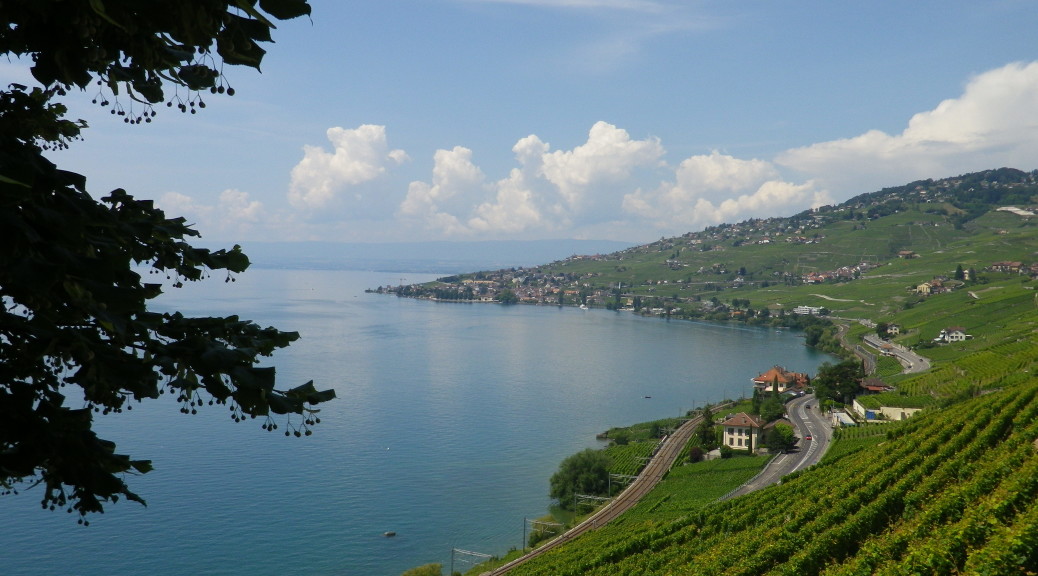While the wines might not be well-known, as they are not much exported, the wine growing area on the hillsides fronting Lake Geneva between Lausanne, Switzerland, to north of Montreux, is famous for a continuous history of wine culture which had its start during the Roman era, but has continued non-stop since about the year 1000 A.D.
Because “the Lavaux vineyard landscape is a thriving cultural landscape that demonstrates in a highly visible way its evolution and development over almost a millennia, through the well preserved landscape and buildings, and also the continuation and adaptation of longstanding cultural traditions, specific to its locality,” according to UNESCO’s website, it has gained world heritage site designation and protection. Even better, the local promoters developed a short hike along the terraces and through the villages to showcase the local area and wines.
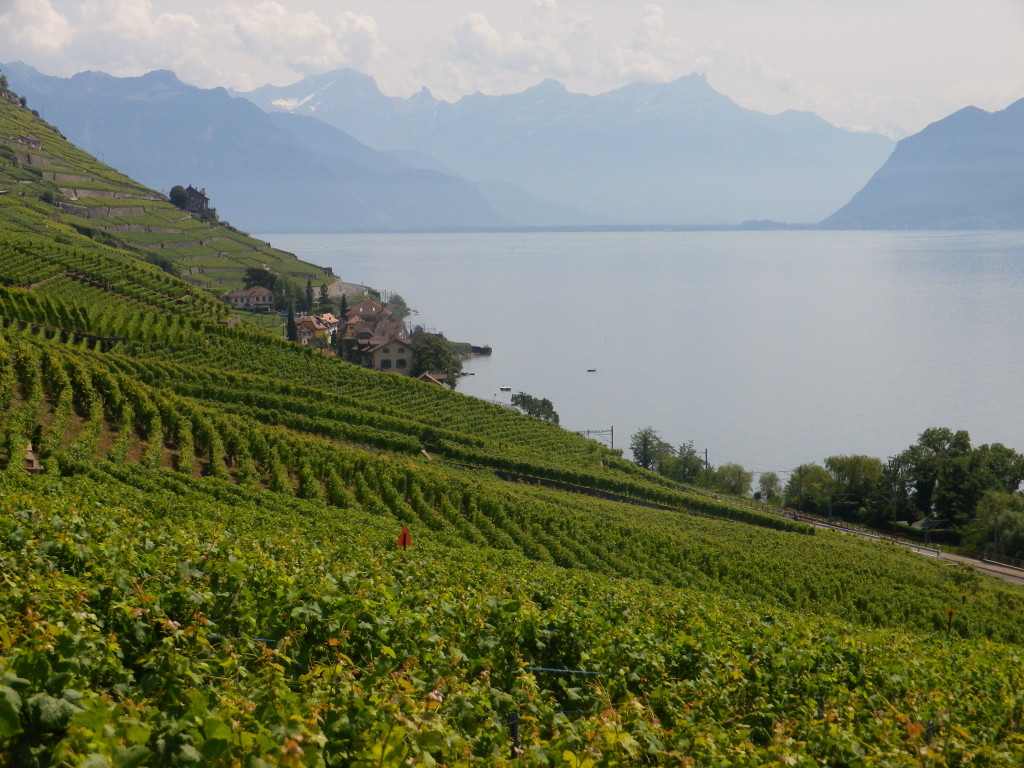
Starting at Saint Saphorin, an unbelievably well-maintained village dating to medieval days, it would easily be recognized by a former, medieval inhabitant. Steep narrow alleys, stone dwellings huddled together, perched on the edge of a slope that slides into Lake Geneva. It is fun to explore and photograph its quiet corners. Above the village, in the vineyards, dramatic views of the Alps appear with snow-capped tips interspersed among some of the rocky peaks.
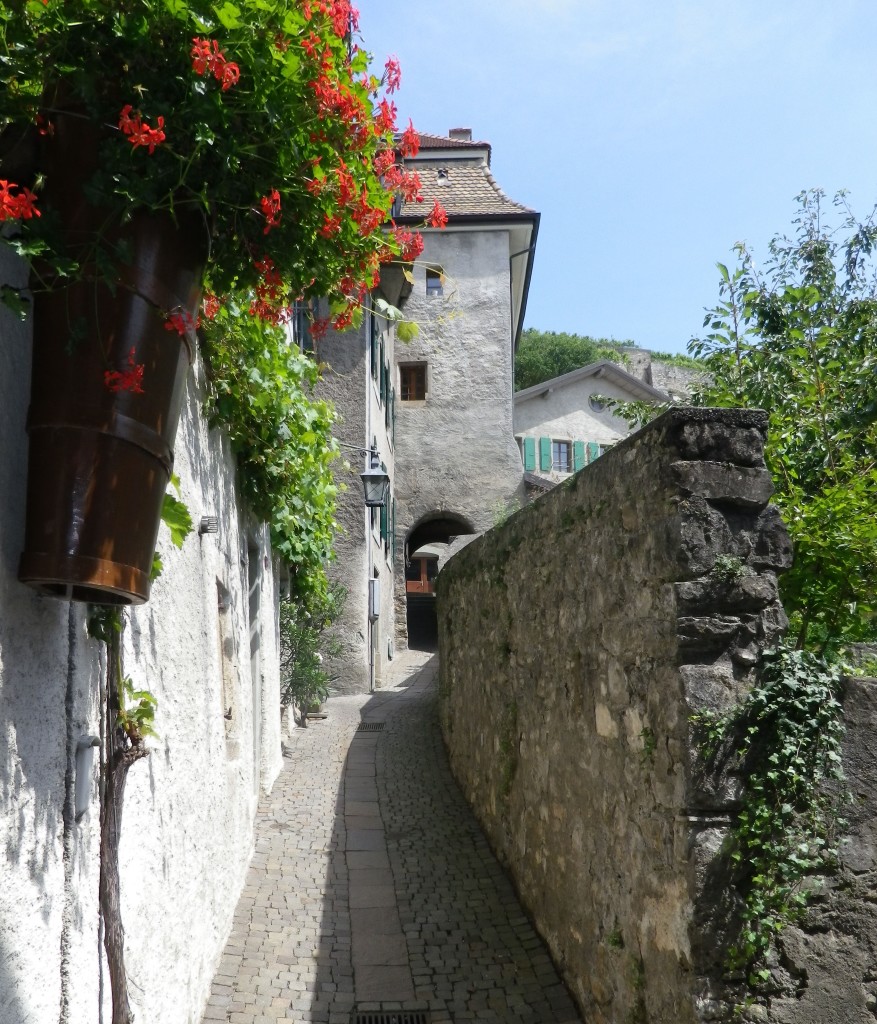
The village of Rivaz, with its multitude of vintners, came quickly thereafter. Continuing to the village of Epesse, surrounded by two Grand Cru designations: Dezaley and Calamin, the trail enters yet another village with timeless appeal. Not long after this village is a picnic area, covered, and with a large table and benches, providing a great spot to relax and take in the scenery. There are a couple more, further along the trail, as well as several shaded rest areas with benches, often at the scenic overlook spots. These areas are particularly welcome as there is precious little shade along the trail.
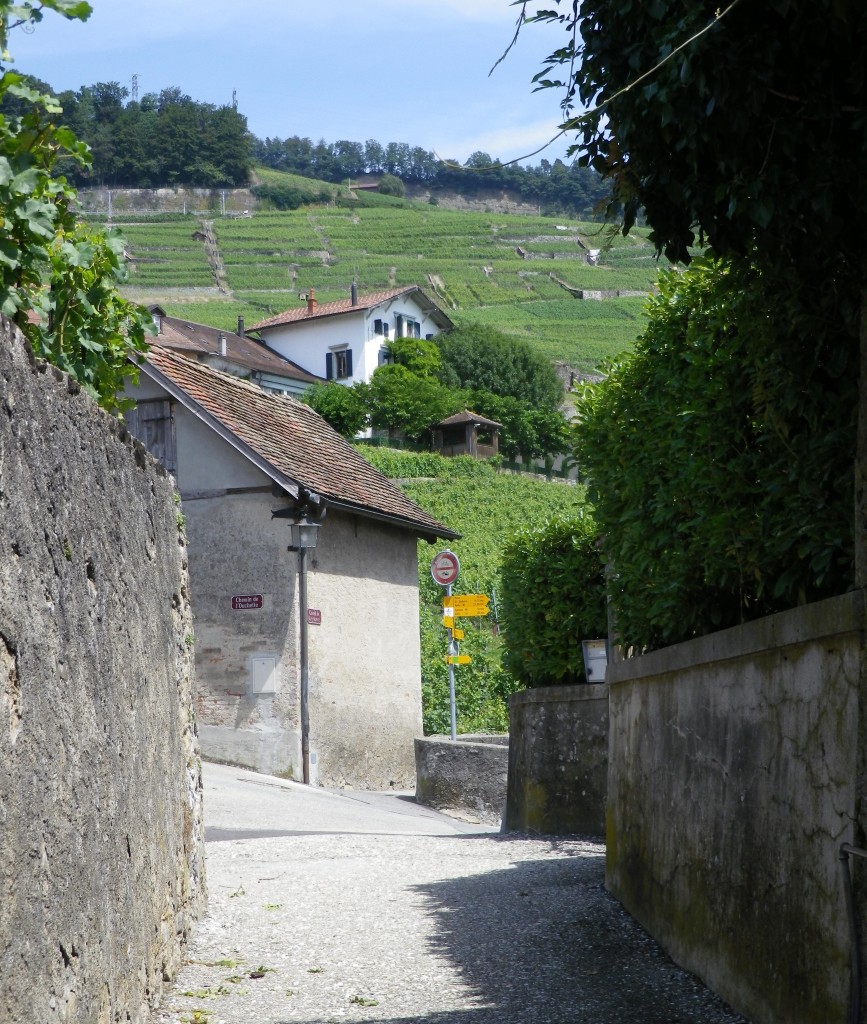
The climb to Riex is steep, and affords only a couple hundred yards of level walking before it climbs again, but the views are worth it. A glittering Lake Geneva extended far into the distance, more mountains appeared behind the large ones already seen. Then, just below the train station at Grandvaux, the trail begins a long but steady descent to Lutry.
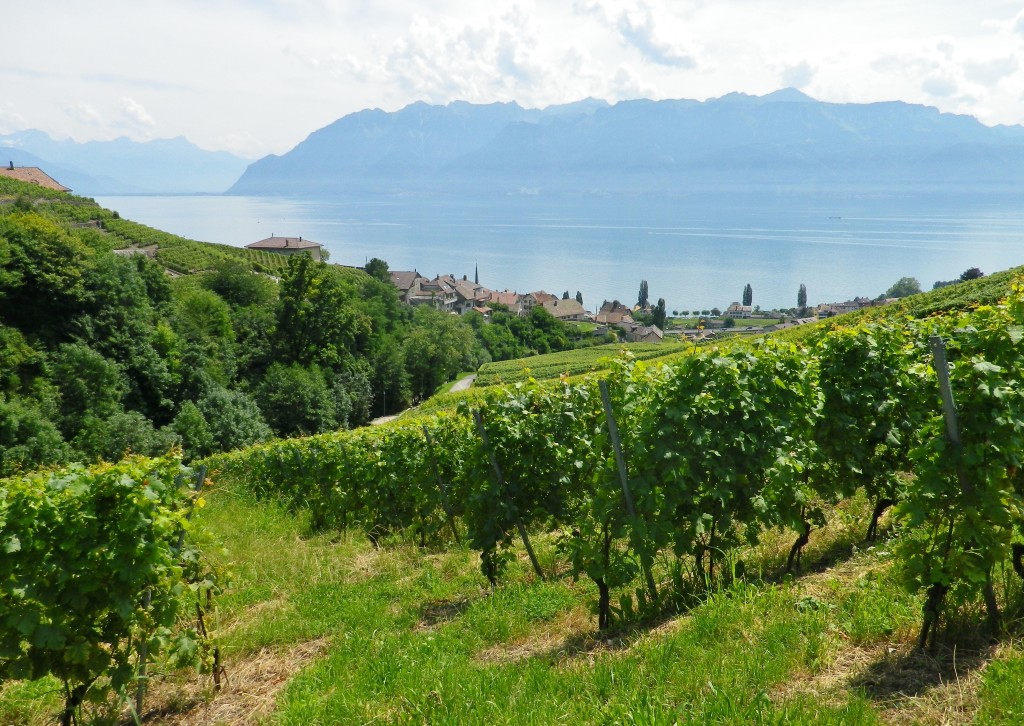
Sadly, if you plan to stop at wine estates or cellars, and there are many, you must plan your hike around open hours, which will be limited on weekends. But one enterprising individual had set up a little trailer in a spot above Villette, near one of the rest stops, and offered wines by the glass! A very nice way to celebrate before the final phase of the hike, which led to yet another village, Aran, and then into Lutry, essentially a suburb of Lausanne.
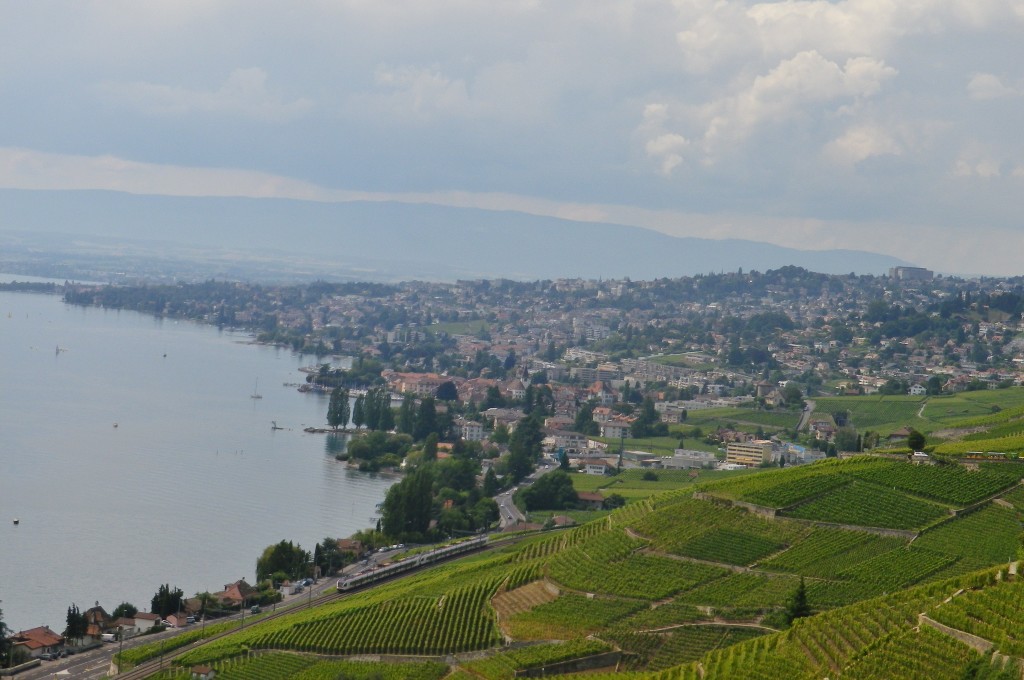
Greater Lausanne’s commuter rail system (specifically the S1) took me to the start point at Saint Saphorin. As the train sped along the lakeside, it provided one more opportunity to admire the scenery, and reflect on the hike through this unique Alpine lake area and world heritage site.
